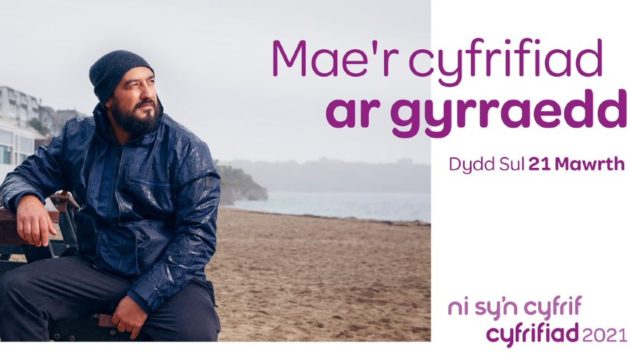Communicating in Welsh
“If you talk to a man in a language he understands, that goes to his head. If you talk to him in his language, that goes to his heart.”
Nelson Mandela
Today we celebrate 20 years of UNESCO’s International Mother Language Day, which is observed every 21 February to promote linguistic and cultural diversity around the world. Across the UK there are scores of languages spoken at the heart of any home. The 2011 Census recorded that there were 15 languages with at least 90,000 speakers in England and Wales, including Polish, Tamil and Turkish.
My mother tongue is Panjabi but the mother tongue of my children, and the one I use most at home and in my local community, is Cymraeg – otherwise known as Welsh.
In the UK we are fortunate enough to have a number of spoken languages which are native to these islands, alongside Welsh – including Gaelic and Scots in Scotland, Irish and Ulster Scots in Northern Ireland and Cornish in south west England. The status of each of these languages is now recognised in some way by governments and authorities, nowhere more so than in Wales.
This month also marks the tenth anniversary of the Welsh Language Measure 2011, the law which gives Welsh “official status” in Wales and which puts a range of duties on public bodies, including one to ensure that they treat “the Welsh language no less favourably than the English language”.

The Welsh Government has an ambition “to see the number of people able to enjoy speaking and using Welsh reach a million by 2050” – an ambition that is supported by the UK Government.
Many public bodies now have a legal obligation to engage bilingually but many others who are not required by law choose to do so, including major charities and voluntary organisations.
Many UK businesses, large and small, have also significantly increased their use of Welsh language or bilingual marketing and engagement for customers in Wales over the past few years.
This became even more visible following Wales football team’s fully bilingual #TogetherStronger campaign at the last European Championships – a campaign which led to some of the world’s biggest brands creating Welsh-language content and which I was fortunate enough to play a role in.
We have also seen a marked improvement in the delivery of public services through the medium of Welsh.
The Department of Work and Pensions now has a network of Welsh-speaking work coaches, you can pay your personal and business tax returns in Welsh and get help from HMRC’s highly rated Welsh-language service, as well as make a passport application and even testify in court if you choose or need to do so.
The need for communicators to use both Welsh and English when trying to reach audiences in Wales will continue to grow.
We won’t know the full footprint of the Welsh language in Wales (and increasingly in England) until later this year when we should get some early findings from next month’s Census 2021. However, we know from regular population surveys that there has been growth of the language over the past decade. That improvement has been strongest in our capital city, Cardiff, which now has as many Welsh-speakers as there are in the traditional heartlands of Gwynedd and Carmarthenshire.
Learning Welsh has become so popular during lockdown that teaching providers have been struggling to meet the demand for new virtual classes. Meanwhile, Duolingo says that in 2020 Welsh was the fastest growing language on its app in the UK.
Creating an immediate connection with our audience is at the heart of all communications activities, it’s how we change behaviours, influence attitudes and convey key messages. For many people in Wales, Welsh is an integral part of their identity, not just for fluent speakers but for those learning the language and for others who may only understand a few words.
There is increasing evidence of a rise in ownership of the language by those who cannot speak it, with more than four in five non-Welsh-speakers believing that ‘the Welsh language is something to be proud of‘.
Therefore, if you are planning any communications activities that need to reach people, businesses and groups in Wales, make sure that you plan to deliver them in both Welsh and English.
In order to support any Welsh language considerations in your communications and engagement strategy, we have developed a practical guide to help you and your teams to expand your provision for Welsh-speakers, not just in Wales but across the United Kingdom.
Diolch yn fawr am darllen – thanks very much for reading.
Ashok Ahir is a Deputy Director in the Cabinet Office Communications team, he was previously Director of Communications for the UK Government in Wales and is Chair of the National Eisteddfod of Wales.
Next steps
- Read Communicating Bilingually: Guidance for UK Government departments when communicating in Wales
- See an example of content in Welsh, from the Department for Work and Pensions’ dedicated Welsh language Twitter account
- See an example of Welsh language digital content from HM Treasury
- Image credits:
- Office of National Statistics (1)
- Shutterstock//Jane McIlroy (2)
